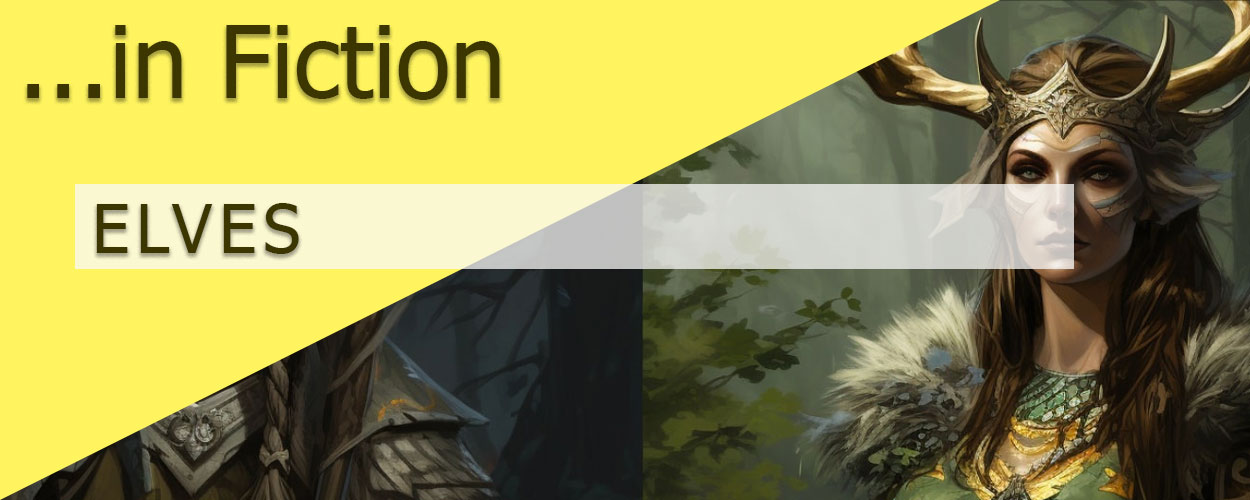

Posted: April 23, 2024
When someone says the word “elves,” one of two things usually comes to mind. Around Christmastime, you’ll think of Santa’s elves, tiny creatures with pointy hats who make toys. Any other time of the year, you may be more inclined to think of the tall, elegant creatures from Lord of the Rings and other fantasy novels.
The elves prevalent in today’s fantasy fiction comes from Norse mythology. Called the Álfar, they were believed to be very beautiful, but also to have strong magic and be the cause of illness.
Light elves, also called Ljósálfar, were often portrayed as godlike creatures living in the realm of Álfheimr, which is just as beautiful and tranquil as them. They are beings of wisdom and goodwill, which is a stark contrast to dark elves.
Dark elves, known as the Dökkálfar or Svartálfar, lived in Svartálfheimr or Nidavellir—the Underworld—which were realms known for their malice. In Norse mythology, dark elves are also called dwarves (this will be covered in an upcoming article about dwarves in fiction).
[Learn more about Norse elf mythology here.]
Some other tales lump elves in with other Fair folk, and their demeanor is much more that of a trickster than anything overly noble or malicious. Like Puck, the fairy from Shakespeare’s Midsummer Night’s Dream.
As mentioned above, whether light elves or dark elves, one thing is clear: they are beautiful. They have otherworldly beauty and grace, and they are known to live centuries. However, while light elves are usually described as taller than humans with fair skin and hair, dark elves are often depicted as short and dark. They live underground and are “blacker than ink” which, from an evolutionary standpoint, would make sense for blending into shadows, I suppose.
The thing to remember is that if you wish to include elves of any kind in your stories and you’re basing them on some legend or another, be sure to keep them accurate. Make things up if you want, but know that your readers expect certain things and you don’t want to lose them by throwing too hard of a curveball.
That being said, you still have some creative liberty. You might lean into dark elves being dwarves like in the mythology, or you might split dark elves and dwarves into their own races entirely. You may use the tall elves we’ve been talking about, or you may use something more akin to the house elves from Harry Potter who are based on brownies.
Most often, you’ll hear about elves having enhanced senses, strength, and stamina. These powers tie into their skills with weapons such as spears or longbows. They are often known for their prowess in tracking and other survivalist techniques.
If you’re using different lore or creating your own version of elves—go wild. Be sure to outline their invented backstory and keep it consistent, but otherwise, you have free reign.
The duality between light elves and dark elves is the age-old story of good vs evil. This, of course, is a trope you can play along with, or try to invert, perhaps by making a dark elf hero or a light elf villain. The freedom to do so is yours.
This series is directly based in Norse mythology, so the elves are represented much like I’ve described in this article. There is a high/light elf character who is outcast from his society for his “imperfection” (since he’s deaf) and there is a dark elf/dwarf character who doesn’t fit in because he likes designing clothing rather than weapons or armour.
I love how inclusive Riordan is in all his writing. He makes his fictional world open and accessible to everyone, and the way he interacts with his fans shows just how much he cares. Of course, he began writing the original story Percy Jackson for his son, who has dyslexia and ADHD, to show that kids with learning differences can be great heroes.
J.K. Rowling’s elves are less ideal. House elves, which are actually based on brownies from Scottish folklore, are slaves within the story. It seems that at one point they may have had a symbiotic relationship with wizards, who may have been used to balance a house elf’s powerful magic, and in return they would do household work (a task they enjoyed greatly). Perhaps their origin was that of elves whose territory was a certain house, and over time the relationship evolved so that their loyalties lay with the owner of the house rather than the house itself. It’s not clear, but modern-day house elves get the short end of the stick—especially the well-known elf, Dobby, who was terribly abused by his former masters.
This medieval fantasy novel follows your basic D&D setup, with mages, elves, and dwarves as they are known in Lord of the Rings. It’s a fun and familiar set-up, and though I prefer books set in a contemporary setting, I enjoy medieval fiction once in a while.
Angels & Demons in Fiction
Deities in Fiction
Dragons in Fiction
Dwarves in Fiction
Dystopia in Fiction
Elves in Fiction
Fast Burn in Fiction
Heroes in Fiction
Love Triangles in Fiction
Magic in Fiction
Mythical Creatures in Fiction
Orcs in Fiction
Powers in Fiction
Pregnancy in Fiction
Propaganda in Fiction
Prophecies in Fiction
Romance in Fiction
Shapeshifters in Fiction
Slow Burn in Fiction
Vampires in Fiction
Vampires in Fiction II
Villains in Fiction
Werewolves in Fiction
Witches & Warlocks in Fiction
Tigerpetal Press is a small book press dedicated to publishing local authors and poets.